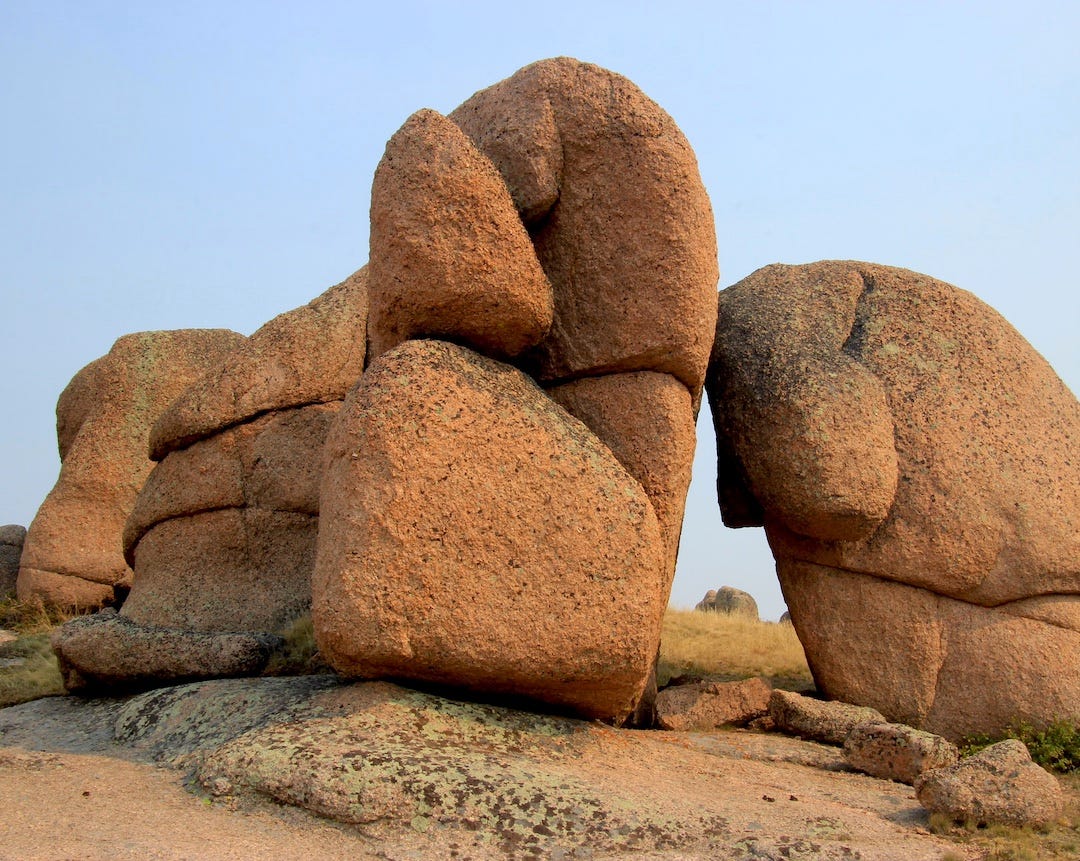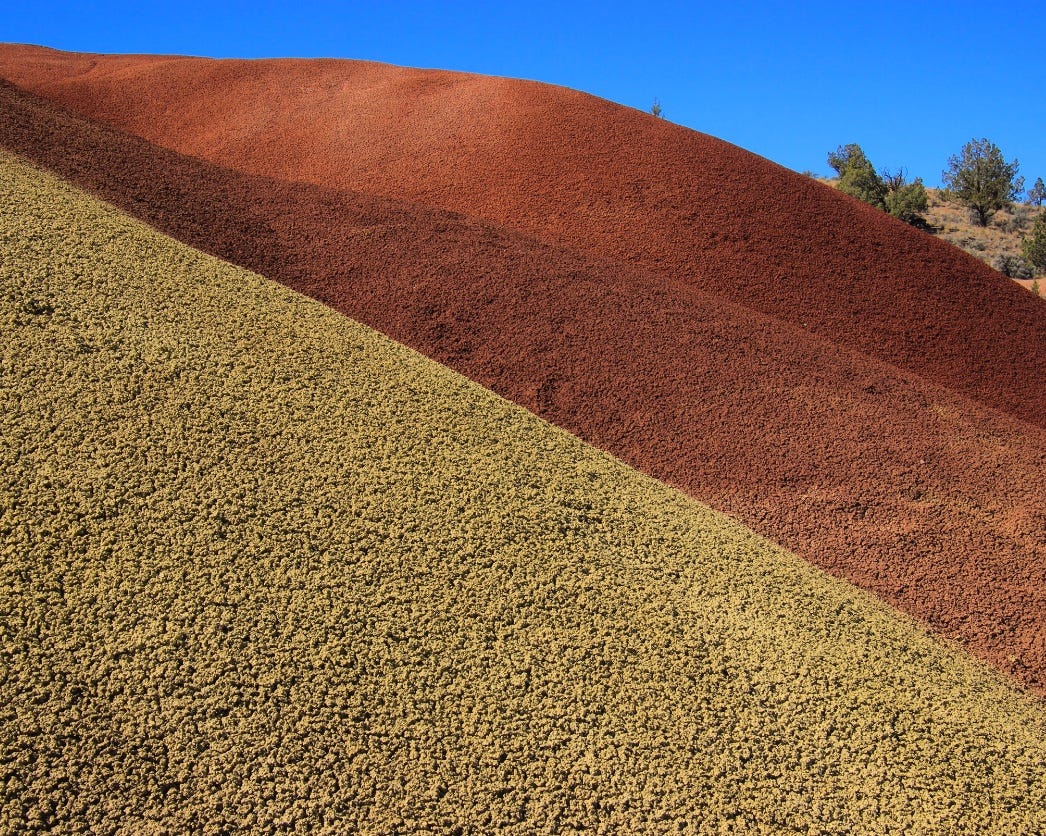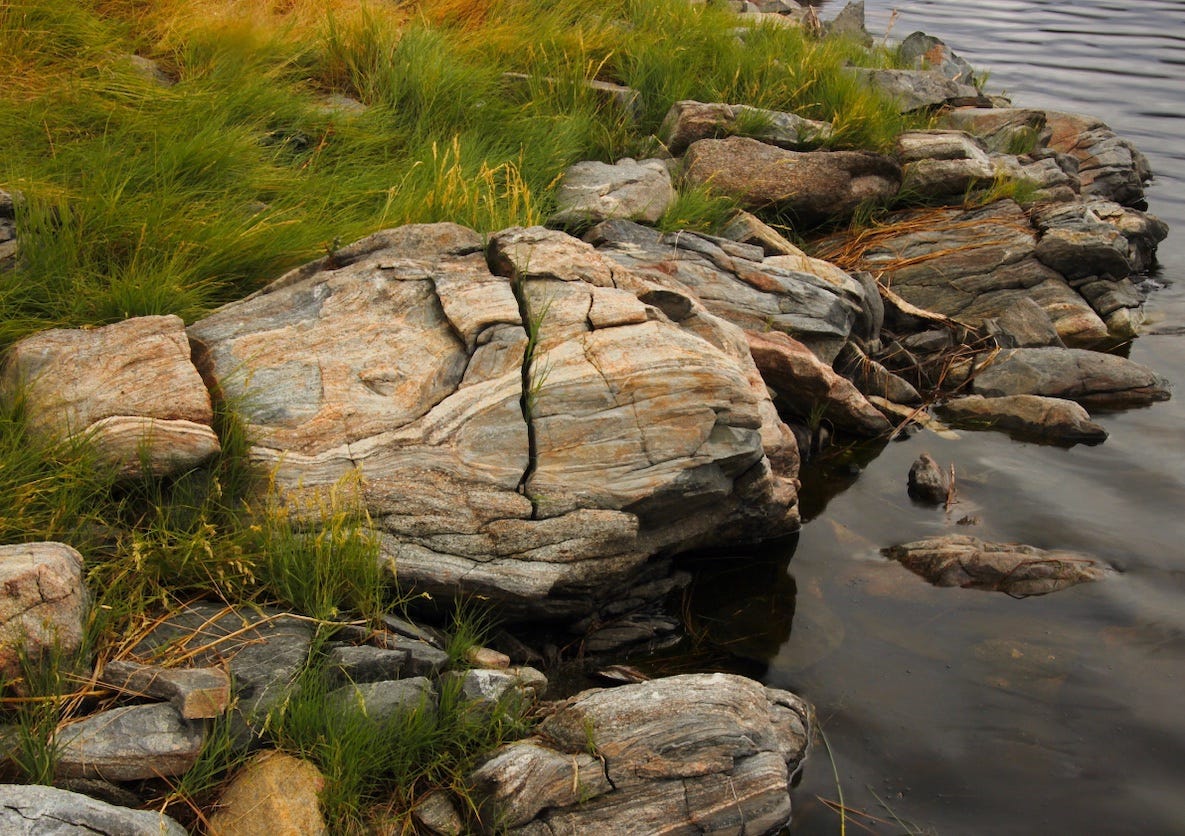Grass widows blooming in southern Spokane County scablands
The Old Testaments, Vol. 2
Cathedral Rock is the most striking feature of the Sheep Rock unit of central Oregon’s John Day Fossil Beds. The prominent aqua-blue stripe near the top, and bluish hue below, is created by celadonite, a mineral that forms in alkaline, volcanic ash beds when the beds are intruded by pressurized hot water.
The ragged, colorful core of Montana’s Garnet Range, east of Missoula. The rocks in the face are some of the youngest in the Belt Supergroup sequence, although that still places them at well over a billion years old. The outcrop is visible from I-90 in the Bearmouth area along the Clark Fork River.
Some of the rocks shoved up to the top of the Bighorn Mountains in northern Wyoming are nearly 3 billion years old. These soaring basement rocks include the Archean pink granite in this photo, exposed and artfully weathered by the nearly relentless wind at 9,000 feet.
Closeup of the 30+ million year old yellow and red fossilized soils (paleosols) at the Painted Hills unit of the John Day Fossil beds.
Topped by an outcrop of Cambrian quartzite (~500 million years old) at its peak, Steptoe Butte is the signature lookout in Whitman County, with sweeping views of the Palouse and the mountains of Idaho’s panhandle to the east.
Closeup of Hat Rock, a landmark along the Columbia River northeast of Hermiston, OR. Hat Rock shows up in the Journals of Lewis & Clark. What I like about it (apart from its fez-like shape) are the thin and fluted columns about the thickness of a baseball bat. This is a characteristic of the Pomona basalt flow, one of the youngest (11 million years) and rarest of the Columbia River Basalt Group flows.
In Washington there are relatively few windows into the deepest reaches of geologic time and all reside in the easternmost quadrant of the state. One of the oldest is the so-called Willow Lake Aureole near Four Lakes, just west of Spokane. About 50 million years ago a balloon of magma from deep in the crust intruded upon a 1.45 billion year old layer of the ancient Belt Basin (the Wallace Formation). The relatively recent (15,000 to 17,000 years ago) Ice Age floods blasted away a covering layer of young basalt, helping to expose the much older rock. What’s revealed is a dynamic piece of natural art–frozen in time–with the magma (now granite) swirling amongst greenish chunks of the ancient rock as though the Wallace rocks are green raisins in a pudding of granite and sparkling black amphibolite.
—tjc












